It’s time to fulfil my promise and publish a review of my “inflatable treasure”, which perhaps can better be described as the Xiaomi Mijia Electric Pump.
Specifications
| Product model | MJCQ01QJ |
| Inflation pressure range | 0.2…10.3 bar (3…150 psi) |
| Charging interface | Micro USB |
| Battery capacity | 2000 mAh (14.8 Wh) |
| Noise level | < 80 dB at 1 metre |
| Tube length | 180 mm |
| Dimensions | 124×71×45 mm (without air pipe) |
| Charging rating | 5 V, 2 A |
| Max. charging time | 3 hours |
| Single charge performance | 41 footballs (1 min each), 8 bike tyres (3 min each), or 5 car tyres (6 min each) |
| Price | About € 40 on AliExpress |
What’s in the box
A traditionally sober white cardboard box (which was slightly beaten during shipping):
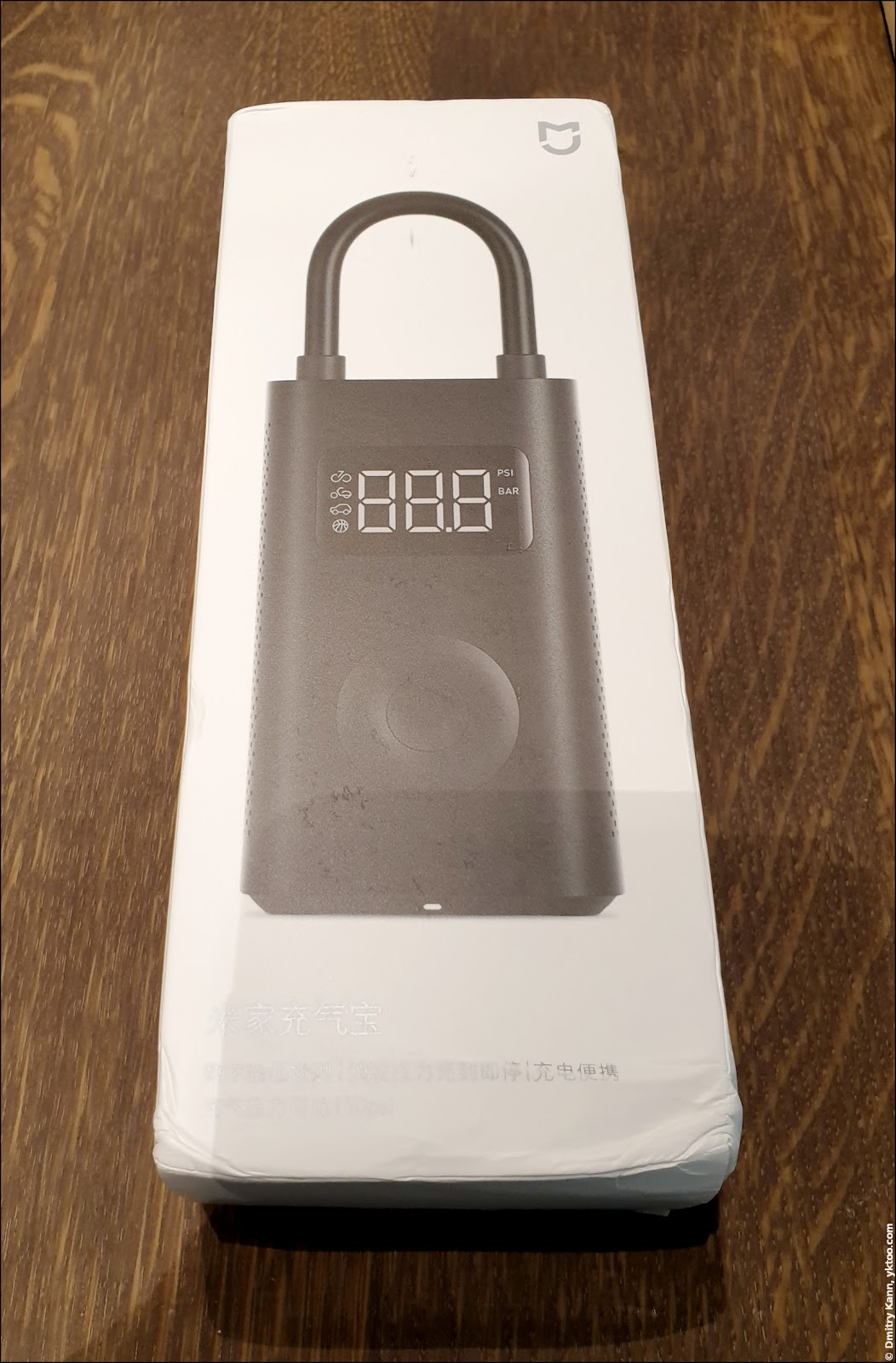
Fortunately the pump itself was perfectly fine and not damaged.
The contents of the packaging:
- The Xiaomi Mijia pump
- USB to Micro USB charging cable
- Football needle
- Bike valve nozzle adapter
- Storage pouch with an accessory section
- User manual in Chinese (not on this photo)
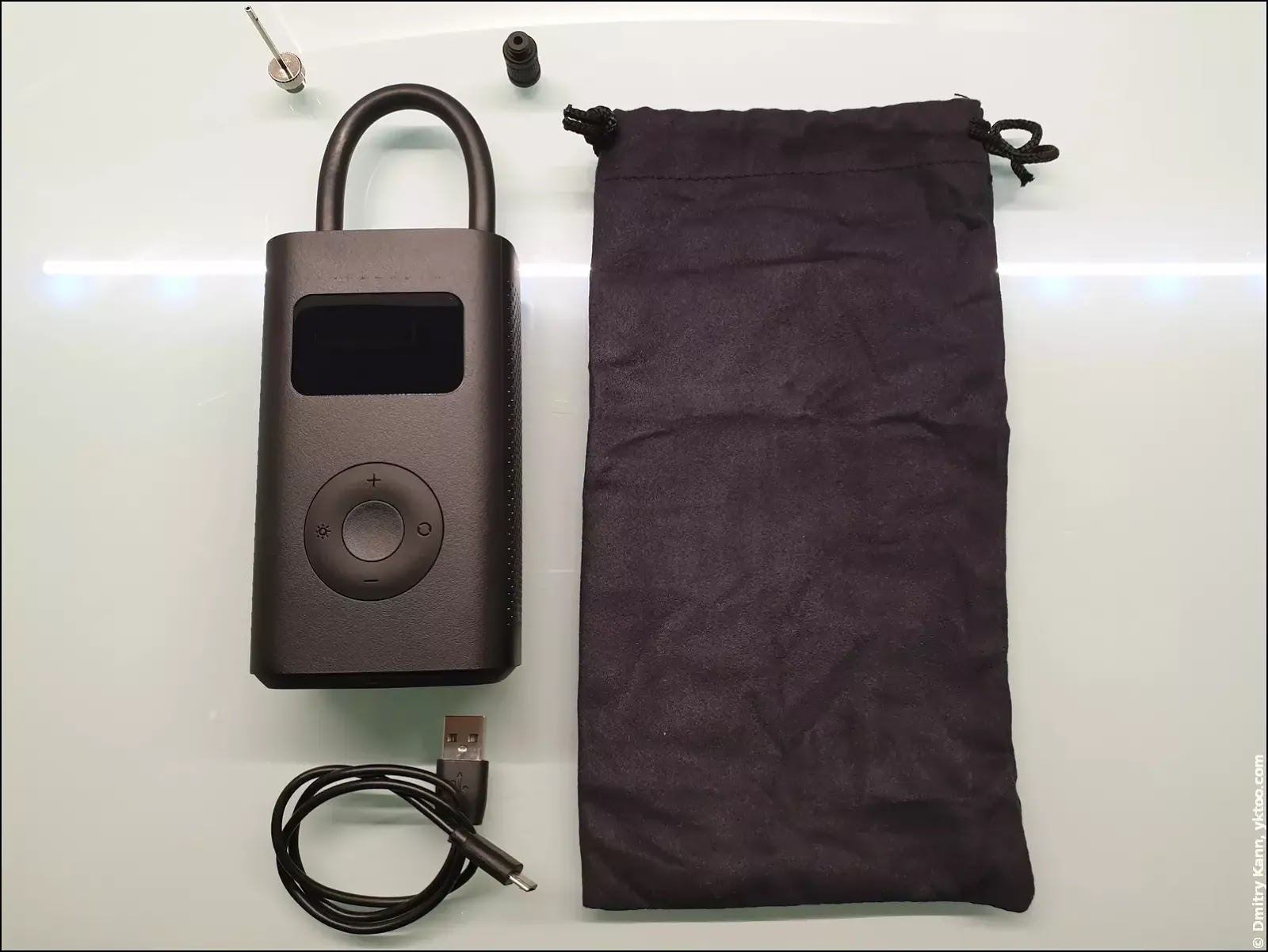
Controls
Anyone who ever owned an iPod Classic will definitely experience déjà-vu looking at this one:
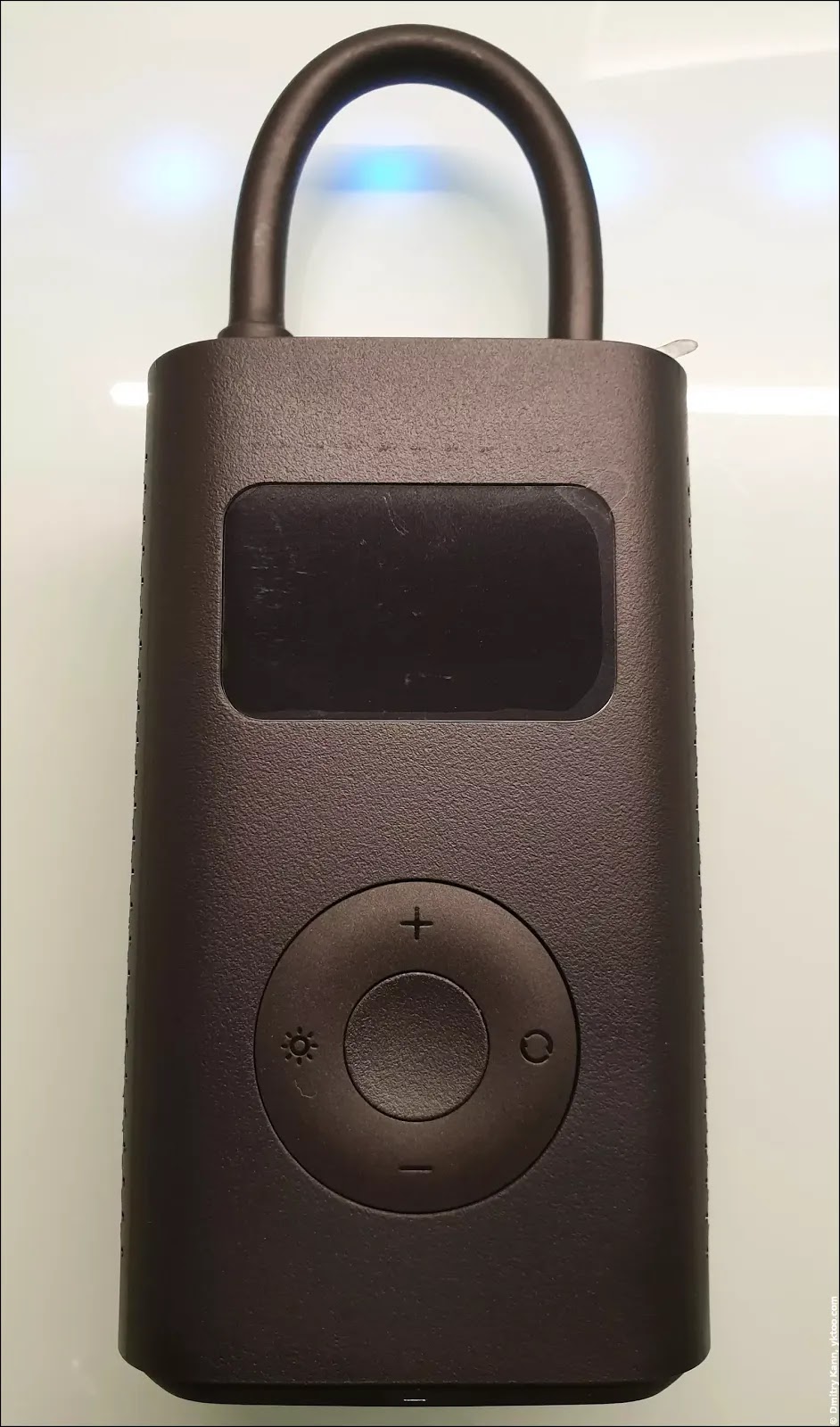
Well, as someone once said, “good artists borrow, Chinese great artists steal.”
The front panel features a large white-LED screen and a five-button ring below it:
- The up-down buttons control the target air pressure;
- The left button toggles a LED flash-light;
- The right button cycles through the available modes (free-entry, bike, motorbike, car, football). A long press toggles the units between bar and psi;
- The central button starts and stops the inflation.
The upper side contains a pressure tube, which is to be inserted with its free end into the red-marked hole in times when not in use. There’s also a bright white LED in the middle serving as a flash-light.
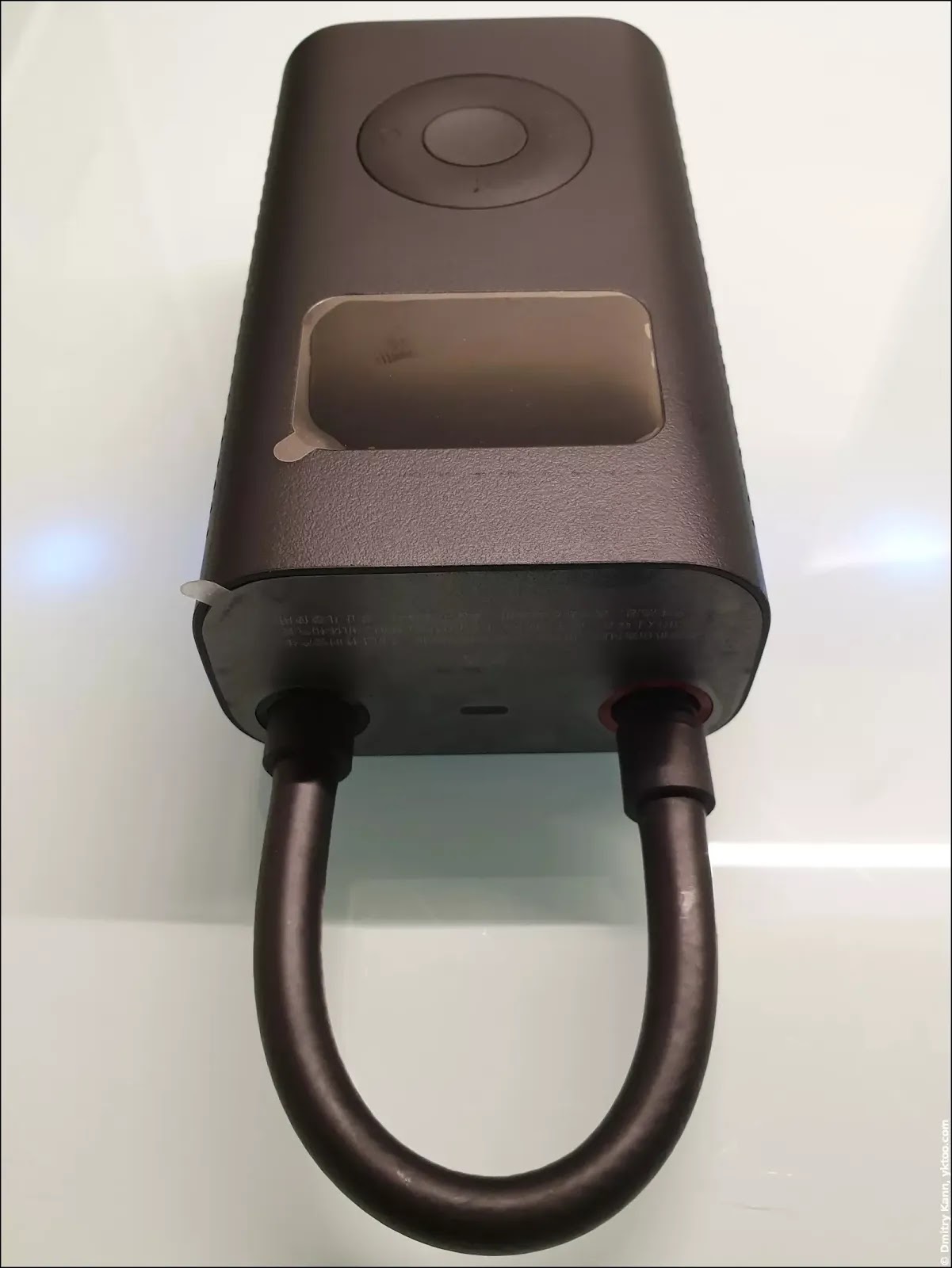
The bottom side features a Micro USB charging port with a rubber cover, and another white LED next to it used to indicate charging or power-on status.
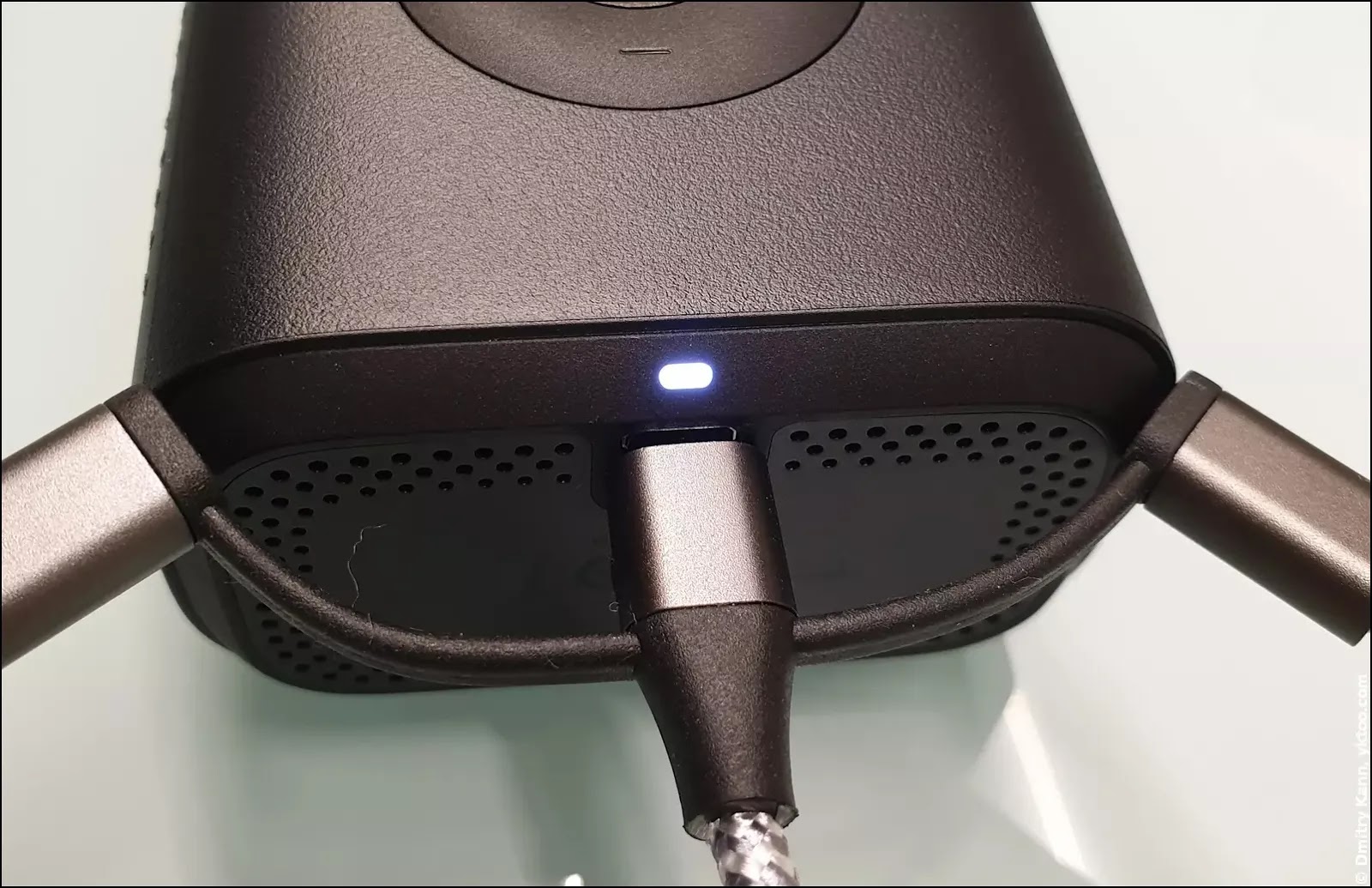
These are all controls this device has.
Usage
I find Xiaomi designs principles quite appealing. They clearly focus on ensuring their products are simple to use by making the user interface minimalistic, at the same time using them doesn’t make you feel you’re assembling a ship through a bottle’s mouth.
For example, there’s no power button here. The device powers on automatically as soon as you pull the tube’s nozzle out of the storage hole. Conversely, it goes off once you put the nozzle back in:
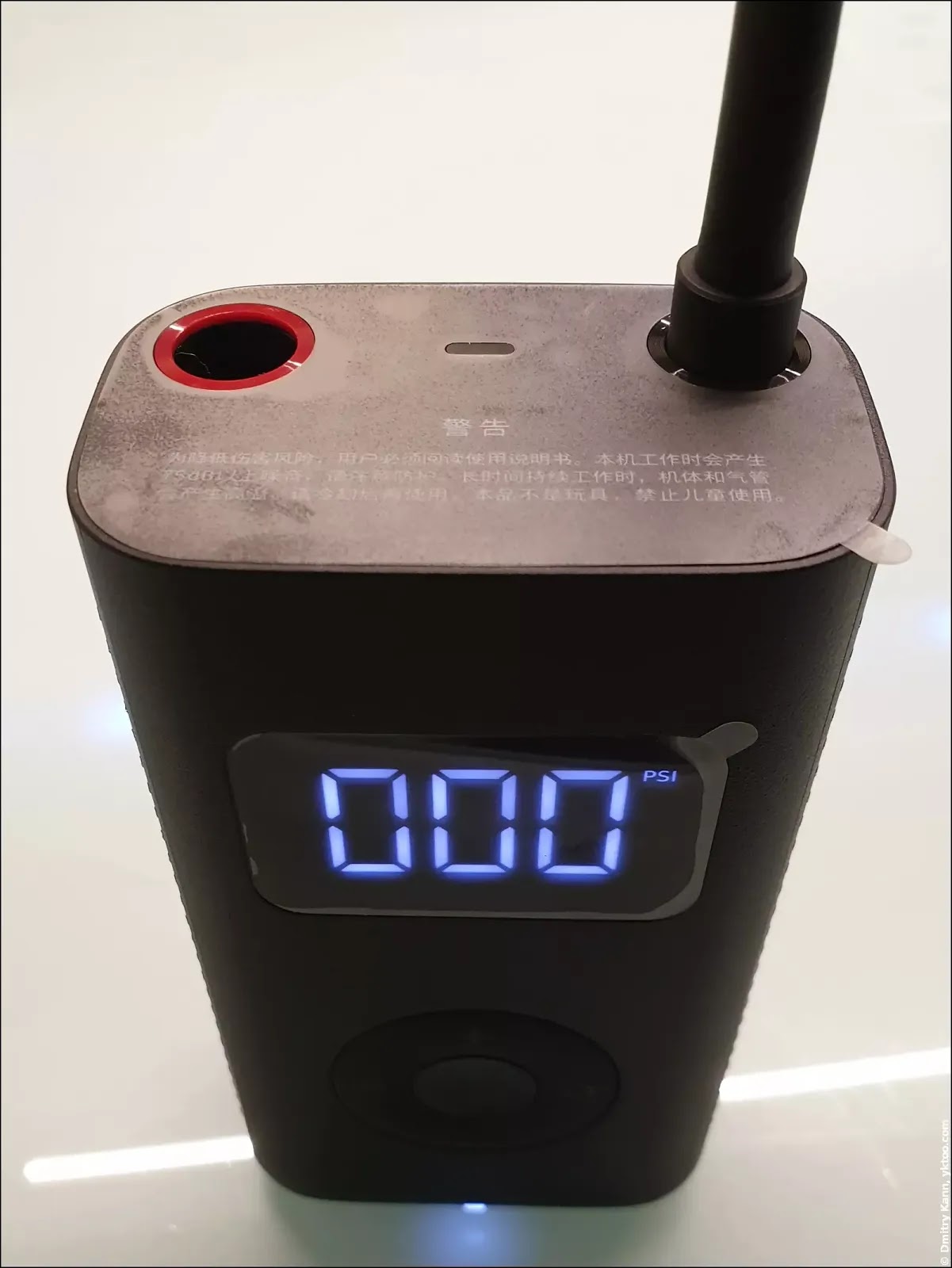
Other controls are just as intuitive.
The left button toggles a LED flash-light, which is pretty bright.
The right button cycles between a free-entry mode and four presets, each of them remembering the last used pressure setting and having an own pressure range. A long press toggles between bars and psi’s.
Free-entry mode
This is the default power-up mode of the pump, in which you can choose a pressure value from the entire available range (0.2…10.3 bar or 3…150 psi).
Bike tyre mode
Range: 30 through 65 psi.
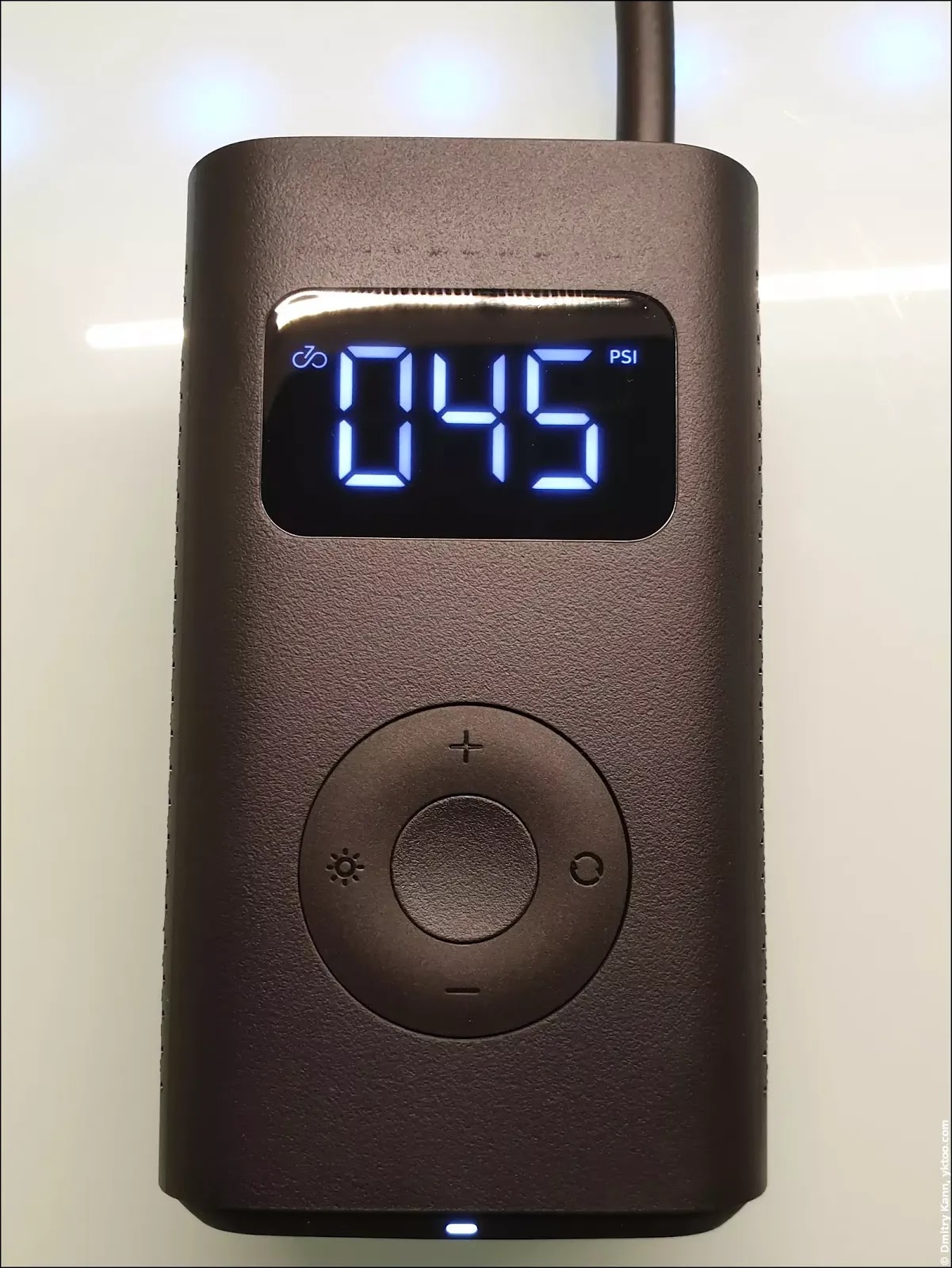
Motorbike tyre mode
Range: 1,8 through 3 bar.
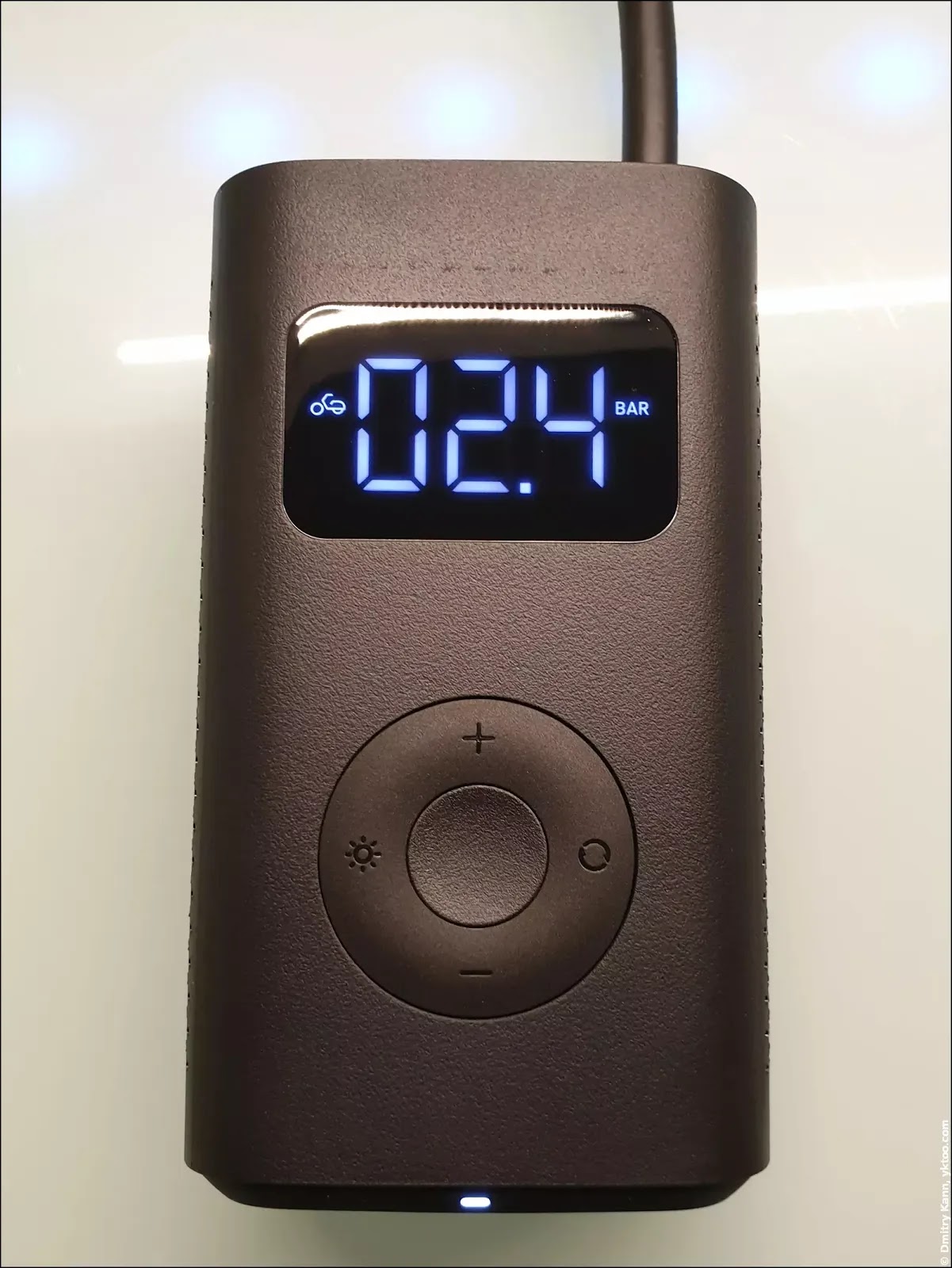
Car tyre mode
Range: 1,8 through 3,5 bar.
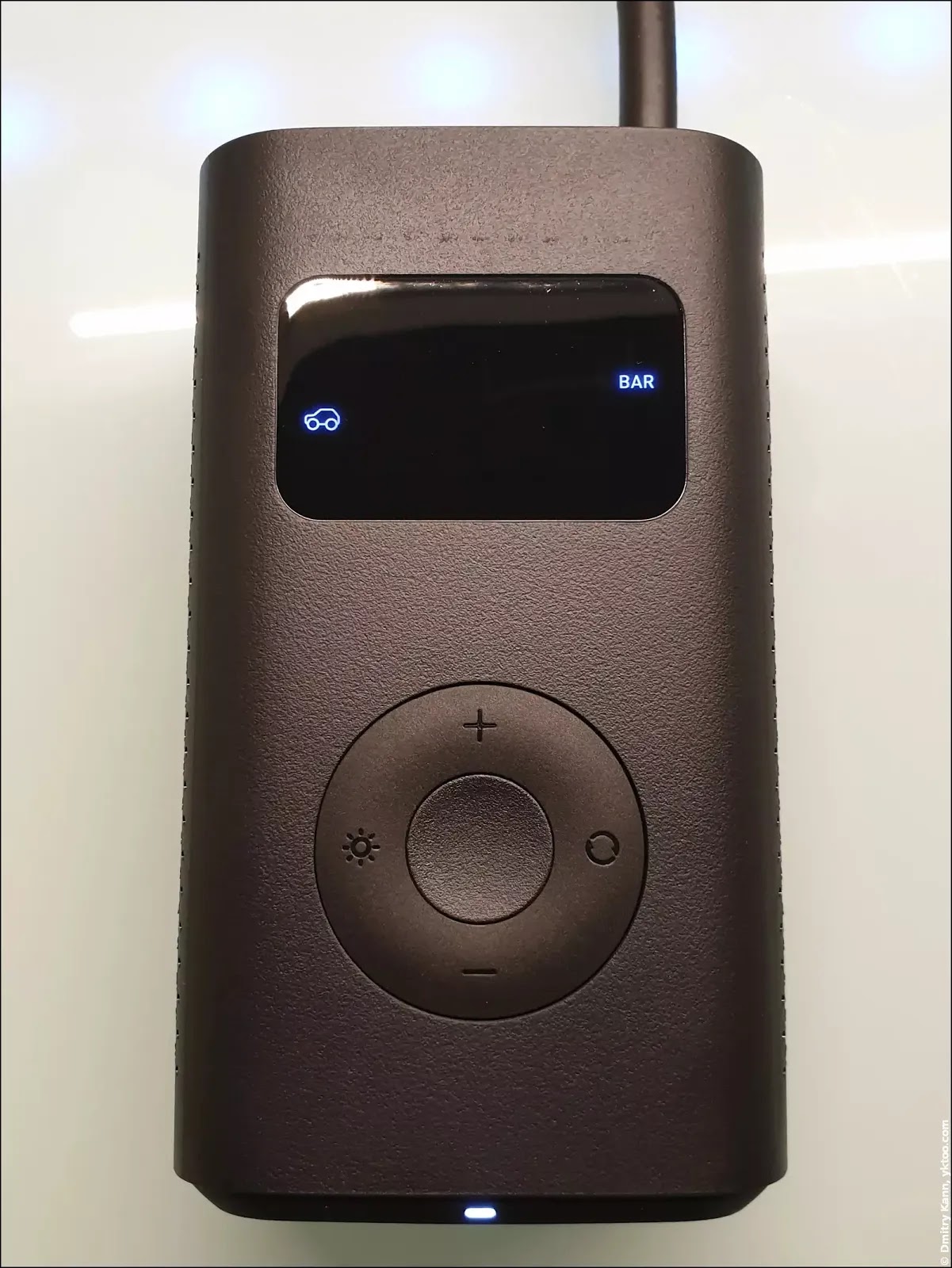
Football mode
Range: 4 through 16 psi.
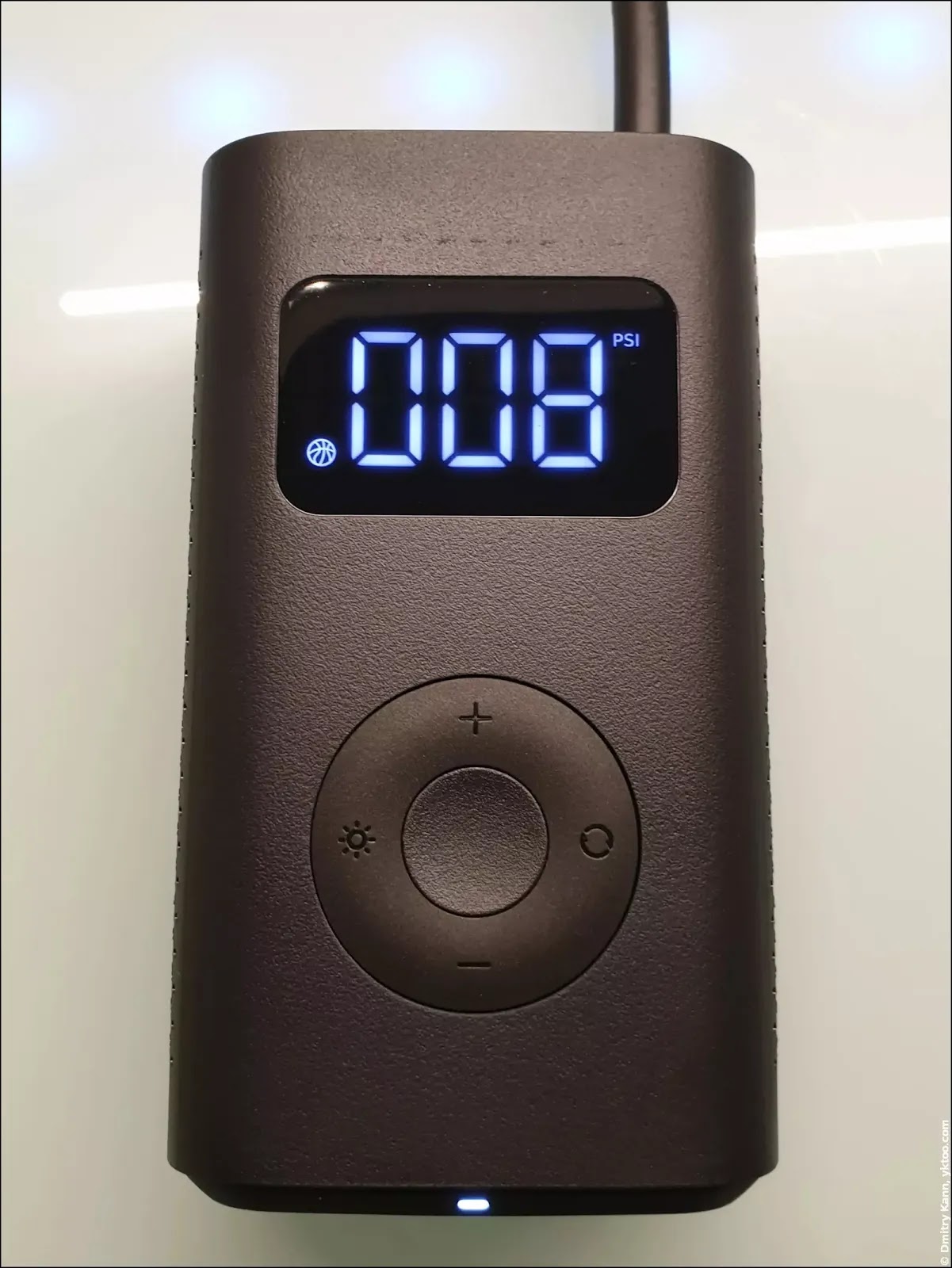
Starting and stopping the inflation
After the desired pressure value has been set with the up and down buttons the reading flashes for a couple of seconds, then the pump enters the measurement mode.
In order to start pumping you press the button in the centre, but be prepared—it’s making a lot of noise. As soon as the pressure reading hits the preset value, the pump automatically stops. It can also be stopped at any moment using the same button.
The nozzle mounted on the inflation tube’s end fits a standard car tyre valve; there’s also a bike valve adapter you can screw onto it. If you happen to use it often, you can simply keep it on as it fits the storage hole perfectly.
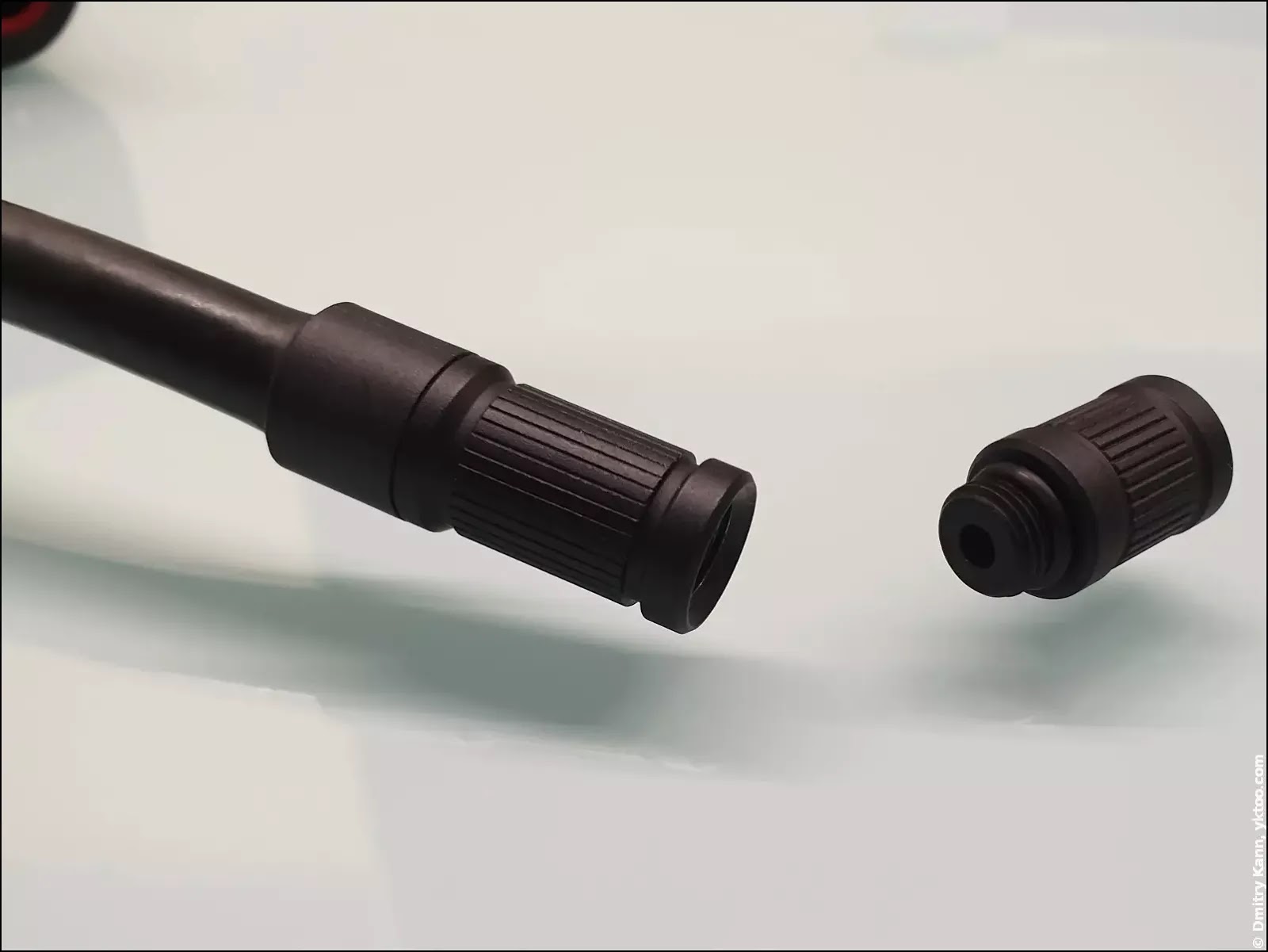
Video demonstration
I’ve recorded a short video demonstrating the pump in action. I’ve inflated my Ninebot One S2 monowheel’s tyre up to the recommended 50 psi, having previously completely deflated it. The pumping took exactly one minute.
With a hand pump I could have done it probably in 10-15 seconds.
Conclusions
The device is very convenient to use and it looks great.
It’s hard to say, however, how long the battery with last. In my view 2000 mAh is a pretty low capacity. But the vendor claims that a single charge is sufficient for handling 8 bike or 5 car tyres, which I find a bit hard to believe.
It’s also quite slow, so I wonder if it can indeed inflate a car tyre in 6 minutes (need to run some field trials).
Otherwise it’s perfect to take along “just in case” as it’s very compact and battery-powered.
Pros
- As good-looking as an air pump can be
- Compact
- Intuitive controls
- Automatic pressure sensor that stops the pump at the right moment
- Built-in flash-light
- Carrying pouch with an accessory pocket
Cons
- A bit pricey
- Pumps quite slowly
- Makes quite a bit of noise
- Battery life is uncertain — needs more testing
Where to buy
On AliExpress for about € 40, including shipping. ■
 — world’s fastest URL shortener
— world’s fastest URL shortener
Comments